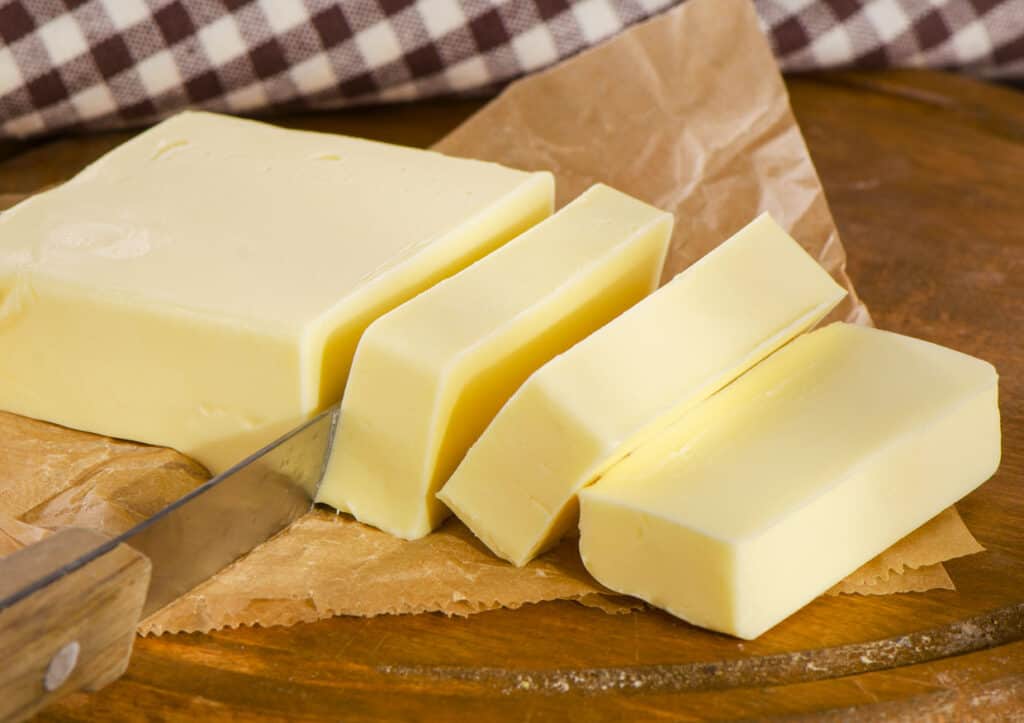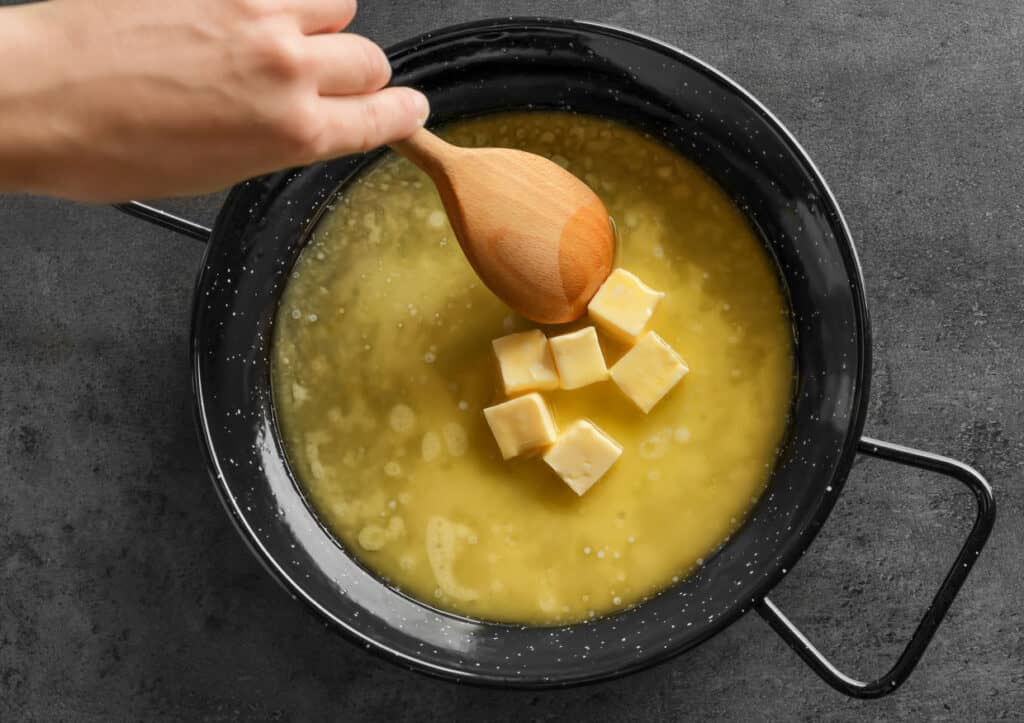Transform ordinary butter into a taste sensation with the magic of brown butter! This secret ingredient will add depth and richness to your cooking and elevate your dishes to new heights.

Learn what it is, how to make it, and most importantly, how to use it in your cooking. So take your taste buds on a flavor journey with this delicious and versatile ingredient.
What Is Brown Butter?
Brown butter is ordinary butter cooked until it melts and the milk solids turn a golden brown. This cooking process brings out deeper, more complex flavors and aromas in the butter.
Where Did It Originate?
Brown butter has been around for centuries in French cuisine, where it is known as “beurre noisette.” It is used in savory dishes, baking, and as a finishing touch for pasta and vegetables.
Recently, it’s become more popular in the US as both chefs, and home cooks discover its versatility and delicious taste.
How To Make Brown Butter
Browning butter is incredibly easy and only takes a few minutes. All you need is a pan, some butter, and patience.
It is easiest to see the butter change color if you use a light-color pan for browning. And salted butter is more likely to burn, so use unsalted butter.
- Cut the butter into pieces and put the pieces in the pan over medium heat. Stir as it melts and begins to foam.
- As it cooks, the water inside will evaporate, and the milk solids will turn golden brown. Keep stirring.
- Watch as the butter browns since it can quickly go from brown to burnt. It will get less foamy as it cooks, and the butter will turn golden brown. This will take 5–8 minutes.
- Once the butter has reached a nice golden brown color and has a nutty smell, take the pan off the heat and immediately pour it into a bowl. If you leave it in the hot pan, it will continue to cook and it might burn.

How Can You Tell When the Butter Is Browned?
The butter is browned as soon as you start to see brown specks in it. It will have a nutty, toasty scent and a deep golden brown color.
Once the butter is properly browned, immediately take the pan off the heat and continue stirring. The butter will burn if overcooked. If the butter burns, it will be bitter and you’ll need to toss it in the bin. The bitter flavor will ruin any dish you add it to.
FDL’S 75 Best Bites

Our cookbook with 75 tasty recipes will be your go-to kitchen companion for easy dinners with ad-free recipes right at your fingertips. Crafted by experienced chefs and recipe developers, this collection offers a treasure trove of tried-and-true dishes that make mealtime a breeze.
Get the Recipe: FDL’S 75 Best Bites
Brown Butter vs. Regular Butter
The main difference between these two types of butter is the flavor. Brown butter has a bold, deep, toasted flavor that ordinary butter lacks.
Brown butter also has a slightly higher smoke point, which means it can be heated to a higher temperature before it starts to smoke. Since some of the water that naturally occurs in butter evaporates through the browning process, browned butter has slightly more calories and fat by volume than regular butter. That is also part of the reason that it has a more intense, concentrated flavor.
How to Store Brown Butter
Brown butter can be stored in an airtight container in the refrigerator for up to a week, but it’s best when used within a few days.
Can You Freeze Brown Butter?
Yes, you can freeze brown butter. First, let it cool to room temperature and then transfer it to an airtight container or wrap it in plastic wrap or foil, sealing it tightly. It will keep in the freezer for up to 6 months.
When ready to use it, thaw it in the refrigerator overnight before using it in a recipe.
Can You Buy Brown Butter?
Browning your own butter is easy, but if it sounds intimidating or simply like too much trouble, don’t fret. Luckily you can buy brown butter at some stores. Trader Joe’s sells it, or you can buy it online at Amazon and other retailers. But keep in mind that it is much more cost-effective to make your own.

Can You Substitute Brown Butter for Regular Butter in Recipes?
Yes, you can frequently substitute brown butter for regular butter. Remember that it will change how the final dish tastes, so make sure the caramel flavors work with your meal.
If your recipe calls for melted butter, it can be used easily. But if your dish calls for softened butter, like many cookie recipes, you must let the browned butter cool and solidify before using.
In addition, some of the water content will evaporate as it browns. So if you brown ½ cup of butter, you will have less when you are done. Take this into account and brown more than the recipe calls for.
Recipe Ideas To Use Brown Butter
Brown butter adds a rich, caramelized flavor to many recipes. Whether whipping up a baked good, sautéing some veggies, or making a sauce, a little brown butter will bring a nutty, delicious twist. And it is Keto friendly too. Here are some ideas to inspire you.
- Pasta: Pasta dishes such as spaghetti aglio e olio or fettuccine alfredo have extra flavor when made with brown butter.
- Seafood: Sauteing seafood dishes, such as scallops or shrimp, in brown butter gives them incredible flavor.
- Vegetables: Use it to sauté or roast vegetables, such as Brussels sprouts, cauliflower, or green beans.
- Baked goods: Brown butter adds a nutty flavor to cakes, cookies, and other baked goods.
- Sauces: Use it as a base for sauces like hollandaise sauce or beurre blanc.
- Soups: Add it to soups such as French onion soup or squash soup.
Try Something New
Are you ready to brown some butter? This simple ingredient can have a considerable impact on your dishes. Transform your cooking by adding its rich, caramelized goodness to your recipes.
Anne Jolly is the creator of the food blog Upstate Ramblings. She loves to cook with gadgets like an air fryer, sous vide or pressure cooker. In her free time she enjoys hiking, reading, knitting and spending time with her three kids.